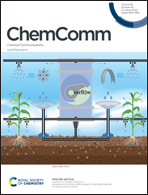Insight into the decay mechanism of cycling capacitance for layered double hydroxides at subnanometer scale†
Abstract
The application of layered double hydroxides (LDHs) in supercapacitors is encouraged by their high capacitances but still limited by deficient cycling stability. The remarkable capacitance decay of LDHs during cycling mainly results from the narrowing of the interlayer distance due to the interlayer anion replacement. A polymer encapsulation strategy is developed to improve the cycling stability of LDHs by inhibiting the anion exchange, opening a new avenue to develop stable LDH-based supercapacitor materials.



 Please wait while we load your content...
Please wait while we load your content...